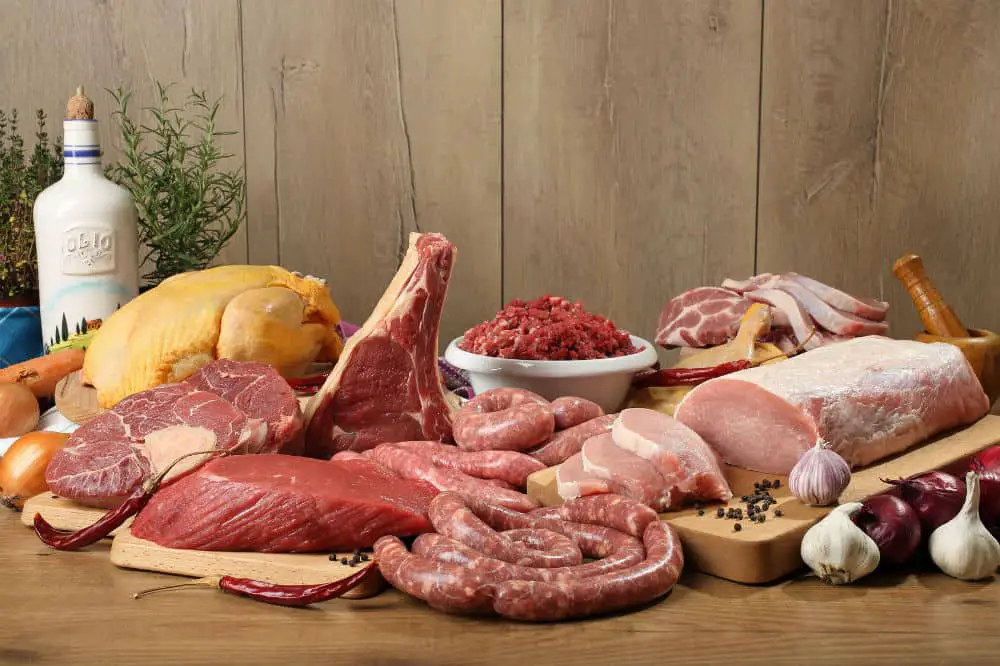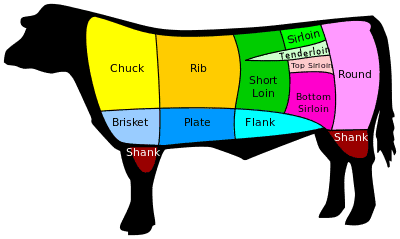This post contains affiliate links. As an Amazon Associate I earn from qualifying purchases
Most people have been eating meat since time began, and it probably started due to the abundance of animals we can get meat from. Different animals have their own types of meat cuts, which have their unique characteristics, and most especially, flavor. We know the difference between the taste of beef and chicken, even though there are many witty remarks that something “tastes like chicken”, while pork, lamb and most animals have their own distinct flavor.
While different animals yield different tastes, most can produce meat from different parts of their body, as the meat originates from their muscles. This results in a vast difference in the tenderness and taste depending on the cuts of meat.
If you’re curious on the different types of meat cuts, then you ought to continue reading.
Table of Contents
Difference Among Cuts
Tenderness
One of the common differences between the various types of meat cuts is its tenderness because the animals, when they were alive, made use of its different muscles to a different extent. The softer meat comes from the less used muscles.
Flavor
While just about all kinds of meat share a palatable, “umami”, or savory flavor that all of us may crave, the reality is, different parts have some slight variations associated with its flavor.
One of the key factors that determine this is the amount of fat present.The parts with marbled fat are usually regarded to be the more beef, pork, or chicken-tasting ones. Some meats coming from other animals also have a “gamey” taste – an acquired taste that could be repulsive for some.
Region Obtained
The tenderness, as well as the flavor of these meats is greatly influenced by the region or part of the carcass from which it is obtained. Beef alone has more than a dozen sections where its commonly-sold meat comes from, with similar cuts applicable for pork as well.
The regions which yield the different types of meat cuts will be explained later.
Price
Some types of meat cuts are more coveted than others. The two most common reasons include the tenderness, as well as the rarity.
The tenderloin is the most tender and the most expensive due to its location and how little of it is found in a single carcass.
Abundance
Some cuts, especially those near the ribs, are sold at a lower price due to the fact that there are more of them, while the tenderloin and sirloin are two of the most expensive kinds of meat because they are the least abundant in every carcass.
This setting of the prices are the decision of the butchers and sellers, unless you happen to be dealing in a government price-regulated environment, in a bid for them to earn the highest amount of profit.
Types of Meat Cuts
Rump or Round
This particular cut is characterized by having a minimal amount of fat. It comes from the rear area of the cow, specifically near the back leg. It’s one of the cheaper cuts as it does not have the natural softness that other parts have.
This is because leg muscles are some of the most frequently-used muscles among cows.
Chuck
Also known as seven-bone steak, this is the part that’s found close to the neck and shoulder regions of the cow. It’s soft, but not as soft as other cuts located in the less frequently-used parts of the cow’s body.
Brisket
Coming from the cow’s lower parts, the brisket has plenty of connective tissue, making it tough and having less meat. To enjoy, you would have to cook it for long periods of time. Don’t put this on the BBQ because it would be difficult to eat without wearing your jaw out! Brisket has great flavor though, so it is ideal for a slow roast or, my favorite, cut it up and use it to make a beef stew.
Short Plate
Another less popular cut, but nevertheless still edible region, is the Short Plate. This is found on the cow’s front belly, just under the ribs. Cuts such as short ribs and skirt steak, come under this classification. Not only is it tough, but it’s one of the fattiest places as well.
Flank
One of the hardest parts to consume is the Flank because it consists of the muscles found in the cow’s abdomen. Its tough meat does not make it a good cut, and the options in which it can be cooked are rather limited. Best to cut into very small slices and/or marinate for a few hours. This cut is often used in Mexican Tacos.
Loin
This is hailed as the premium of all types of meat as it’s obtained from the cow’s back. Of all the muscles in the cow’s body, this is one of the least-used, making it one of the softest, and therefore the most desired cuts.See the chart above for a better understanding.
Some of the cuts from here, on a cow, are
- Tenderloin, often referred to as filet mignon,
- T-Bone and Porterhouse, almost the same thing but the Porterhouse has a slightly larger portion of tenderloin.
- Top Loin, also referred to as strip loin, strip steak, New York strip. Very flavorful, tender and cheaper than tenderloin. In my mind, the better value.
Ribs
In terms of premium cuts, the ribs are undeniably one of them. This cut pertains to numbers 6 to 12 for the ribs. In terms of the marbling and combination of muscle and fat, it’s one of the softest, juiciest cuts of meat one could ever dig into.
Shank
If you want to get a taste of meat without spending a lot of money, then the shank is the ideal option for you. Just like the Rump, this also belongs to the leg muscle region which makes it tough.
Sirloin
This part belongs to the loin region, and is considered as the second best to that of the tenderloin. While not as soft as tenderloin, it’s still preferred because it’s not as tough as other parts, while giving you tender meats at a relatively lower price.
Conclusion
One of the things you have to keep in mind whenever you make a purchase of meats of any sort, is that you need to make sure that it’s in its freshest state or else it won’t matter what cut you buy; you won’t be able to experience the taste of meat at its best.
Also, be wary of the right means of cooking specific cuts of meat, given that not all ways of cooking are suitable for the different parts.


